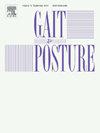Linking brain activation to standing balance performance: A systematic review and meta analysis of functional near-infrared spectroscopy literature
IF 2.2
3区 医学
Q3 NEUROSCIENCES
引用次数: 0
Abstract
Background
Functional Near-Infrared Spectroscopy (fNIRS) holds promise for clinical applications in the field of balance impairment amelioration; however, the relationship between fNIRS metrics and balance performance remains uncertain. We aimed to quantify the correlations between fNIRS-derived brain activation and standing balance performance, and determine variables that influence these associations.
Methods
We systematically reviewed English-language studies, published across PuBMed, PsycINFO, Embase, CINAHL, Ovid Medline, and Web of Science from inception up until July 1, 2024, that assessed standing balance tasks in adults > 18 years old with or without medical diagnosis measured with fNIRS. Pooled correlation coefficients were synthesized using a random effects restricted maximum likelihood model.
Results
Overall, 17 studies were included with 420 participants. Key factors influencing the identified relationships were brain region and participant diagnosis. We identified moderate correlations between balance performance and cortical activation recorded by fNIRS in the supplementary motor area (SMA) (r = 0.52, 95 % CI = 0.39 0.64), and the prefrontal cortex (PFC) (r = 0.47, 95 % CI=0.32 – 0.60). In the PFC, increased oxygenated haemoglobin (HbO) was negatively associated with balance measures. The reverse relationship was reported in the PFC for individuals with physical and cognitive impairment. In the SMA, HbO was positively associated with balance. Few studies found associations between deoxygenated haemoglobin (HbR) and total hemoglobin (HbT) with balance performance.
Significance
Current evidence supports a relationship between fNIRS measures, specifically HbO, with standing balance performance. This relationship depends on the brain region measured, age, and the diagnosis of the participants. To better understand this relationship, there is a need to report standardized balance performance metrics alongside other metrics of interest to better synthesize data across publications. Improved understanding the neural basis of standing balance with fNIRS will lead to more informed interventions for balance rehabilitation.
将大脑激活与站立平衡表现联系起来:功能性近红外光谱文献的系统回顾和meta分析
功能近红外光谱(fNIRS)在平衡障碍改善领域的临床应用前景看好;然而,fNIRS指标与平衡性能之间的关系仍然不确定。我们旨在量化fnirs衍生的大脑激活与站立平衡表现之间的相关性,并确定影响这些关联的变量。方法:我们系统地回顾了发表在PuBMed、PsycINFO、Embase、CINAHL、Ovid Medline和Web of Science上的英语研究,这些研究从成立到2024年7月1日,评估了18岁成人(>; )站立平衡任务,这些成年人有或没有医学诊断,用近红外光谱测量。综合相关系数采用随机效应限制最大似然模型。结果共纳入17项研究,420名受试者。影响确定关系的关键因素是脑区域和参与者的诊断。我们发现,在辅助运动区(SMA) (r = 0.52,95 % CI= 0.39 0.64)和前额叶皮质(r = 0.47,95 % CI=0.32 - 0.60)中,平衡表现与fNIRS记录的皮质激活之间存在中等相关性。在PFC中,氧合血红蛋白(HbO)的增加与平衡测量呈负相关。在有身体和认知障碍的个体中,PFC呈相反的关系。在SMA中,HbO与平衡呈正相关。很少有研究发现脱氧血红蛋白(HbR)和总血红蛋白(HbT)与平衡性能之间存在关联。目前的证据支持fNIRS测量,特别是HbO与站立平衡性能之间的关系。这种关系取决于测量的大脑区域、年龄和参与者的诊断。为了更好地理解这种关系,需要报告标准化的平衡性能指标以及其他感兴趣的指标,以便更好地综合出版物之间的数据。提高对站立平衡的神经基础的理解,将为平衡康复提供更明智的干预措施。
本文章由计算机程序翻译,如有差异,请以英文原文为准。
求助全文
约1分钟内获得全文
求助全文
来源期刊

Gait & posture
医学-神经科学
CiteScore
4.70
自引率
12.50%
发文量
616
审稿时长
6 months
期刊介绍:
Gait & Posture is a vehicle for the publication of up-to-date basic and clinical research on all aspects of locomotion and balance.
The topics covered include: Techniques for the measurement of gait and posture, and the standardization of results presentation; Studies of normal and pathological gait; Treatment of gait and postural abnormalities; Biomechanical and theoretical approaches to gait and posture; Mathematical models of joint and muscle mechanics; Neurological and musculoskeletal function in gait and posture; The evolution of upright posture and bipedal locomotion; Adaptations of carrying loads, walking on uneven surfaces, climbing stairs etc; spinal biomechanics only if they are directly related to gait and/or posture and are of general interest to our readers; The effect of aging and development on gait and posture; Psychological and cultural aspects of gait; Patient education.
 求助内容:
求助内容: 应助结果提醒方式:
应助结果提醒方式:


